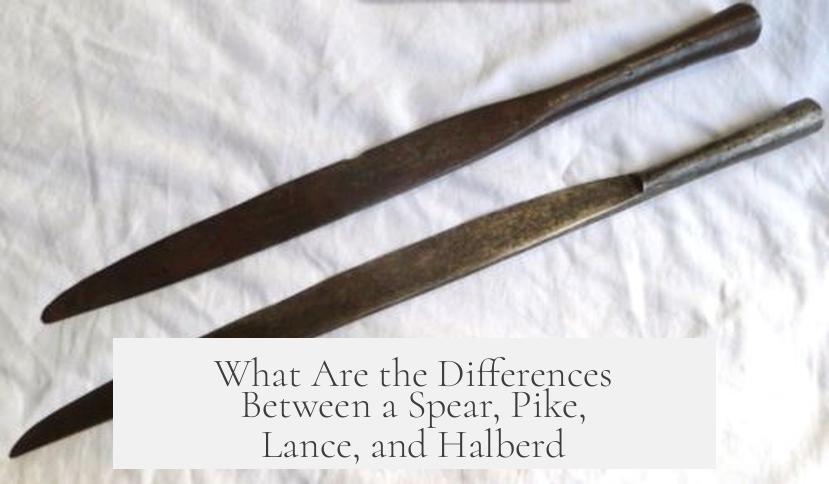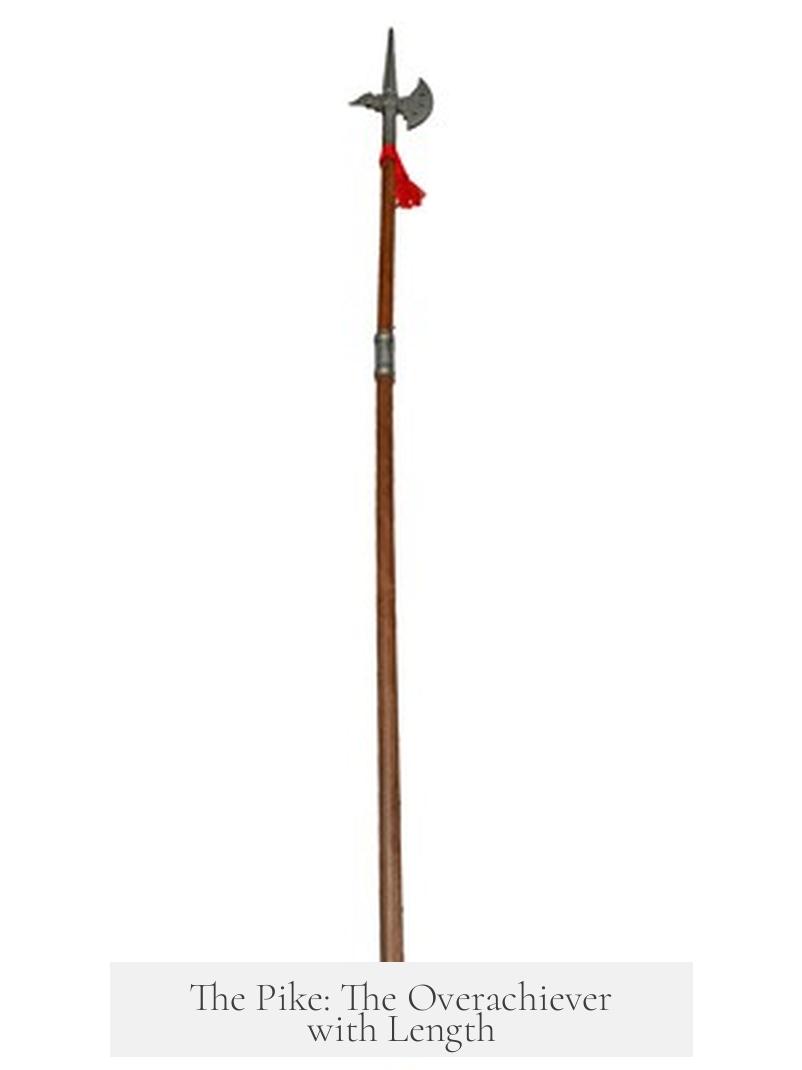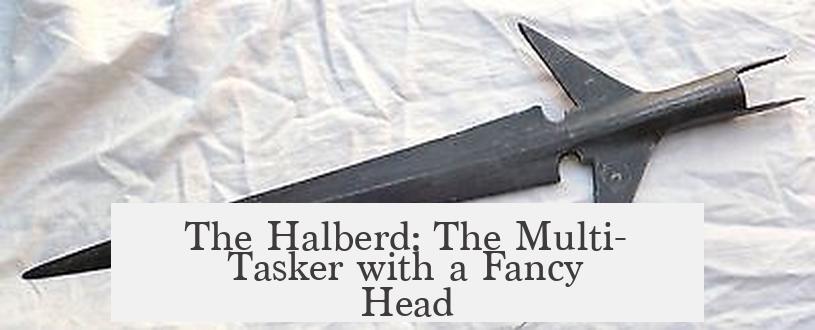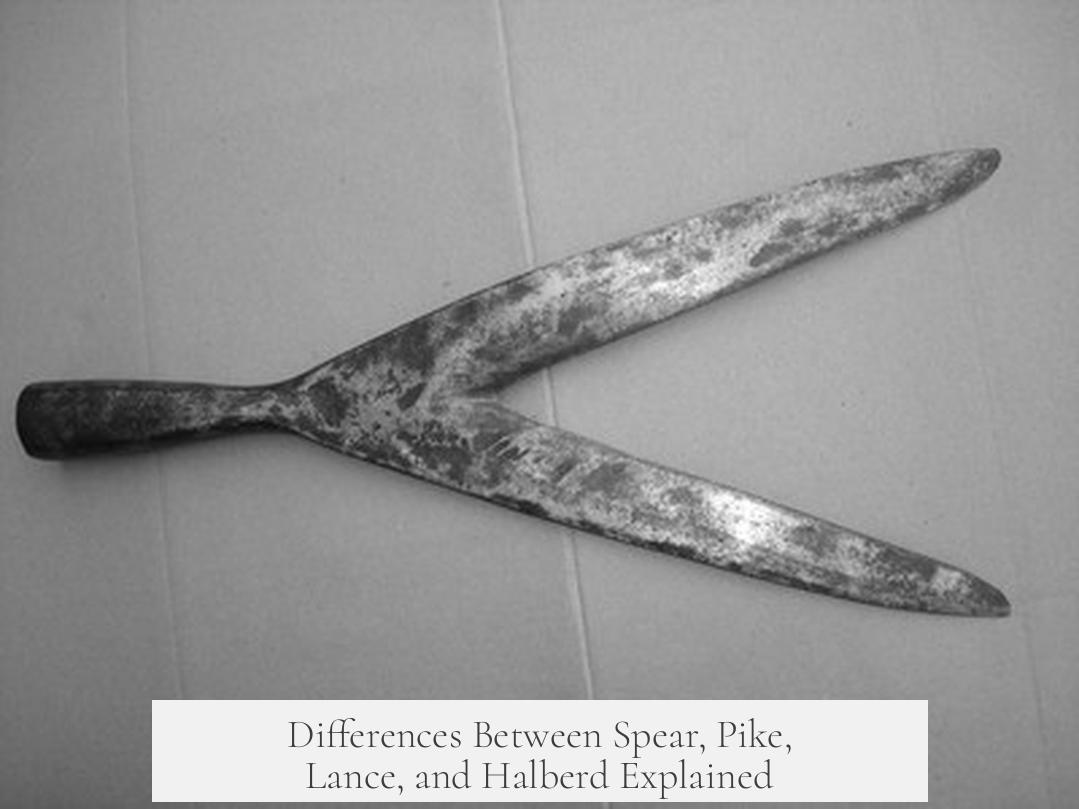The main differences between a spear, pike, lance, and halberd lie in their length, usage, and design. Each weapon serves distinct combat roles based on these factors.
A spear is a relatively short pole weapon, typically between four and eight feet long. It is designed for use with one hand in many cases. The spear’s versatility makes it ideal for both throwing and thrusting by infantry soldiers.
The pike is significantly longer, often exceeding five meters (about fifteen to twenty feet). Due to its length, it requires two hands to wield effectively. Pikes are primarily defensive weapons used in formations to keep enemies, especially cavalry, at a distance.
The lance is a specialized type of spear used primarily by cavalry units. It can be quite long, frequently around ten feet or more, allowing mounted soldiers to strike enemies at a distance during charges. The lance’s design emphasizes thrusting power while maintaining balance on horseback.
Unlike the previously mentioned weapons, the halberd features a multifunctional head combining an axe blade, a spear point, and a hook. This combination allows users to pierce, cut, and pull opponents or their shields. The halberd is shorter than the pike but longer than a standard spear, making it suitable for a variety of combat scenarios.
| Weapon | Length | Usage | Design Features |
|---|---|---|---|
| Spear | 4–8 feet | One-handed, versatile infantry use | Simple pointed head |
| Pike | 15–20 feet | Two-handed, defensive infantry formation | Long spearhead |
| Lance | About 10 feet | Mounted cavalry charging | Spear designed for horse use |
| Halberd | Varies, typically medium length | Infantry, multi-purpose attack | Axe blade, spear point, hook |
The spear, pike, and lance share a basic spearhead shape but differ in length and tactical application. The halberd diverges with its composite head designed for versatile combat roles.
- Spear: shorter, one-handed, versatile
- Pike: very long, two-handed, defensive formation weapon
- Lance: designed for cavalry, used during charges
- Halberd: multi-functional head, combines stabbing and cutting
What Are the Differences Between a Spear, Pike, Lance, and Halberd?

Ever wondered why there are so many different “pointy sticks” in history books and movies? The spear, pike, lance, and halberd might look alike at first glance, but each has a unique story, purpose, and design. Simply put, the differences lie in their length, use, and design—the spear is a versatile shorter weapon, the pike is a long pole needing two hands, the lance is a cavalry-specific spear, and the halberd is a multi-functional polearm with a complex head. Let’s plunge into their fascinating differences.
Picture yourself in the heat of battle. You’re wielding a spear, or maybe a halberd? How do you know which is which? Great question.
The Spear: The Jack-of-All-Trades Pointy Weapon
The spear is the parent of many pole weapons. Typically, it measures between four to eight feet, which means you can easily handle it with one hand. Forget about juggling two hands or calling a buddy for help. Its smaller size makes it suitable for foot soldiers who need speed and flexibility.
Archaeological finds show the spear has been humanity’s go-to weapon for millennia. It’s simple: a sharp tip on a stick. Yet, its versatility is its charm. Thrust, throw, or parry—spears do it all. From hunting wild animals to dueling foes, this weapon covers many bases. It’s the “Swiss Army knife” of early pole weapons, without the corkscrew.
The Pike: The Overachiever with Length

Enter the pike: the spear’s much longer cousin. Often stretching more than five meters (or about 15-20 feet for those who prefer the imperial system), the pike says, “Size does matter.” It’s big, it’s imposing, and you need both hands just to keep it steady.
Why so long? Pikes give infantry an advantage by keeping enemies—especially cavalry—at bay. Imagine a wall of soldiers standing shoulder to shoulder, their long pikes pointing like a porcupine. Charging a pike formation is like running headfirst into a sea of spikes. Not smart.
The pike’s length and double-handed grip mean it sacrifices some nimbleness for reach and defensive power. The famous Swiss and English pikemen were masters at this, creating formidable formations that turned the tide during medieval battles.
The Lance: The Horseman’s Spear
The lance is a specialized form of spear, often around 10 feet long, tailored for one purpose: thrilling cavalry charges. If you imagine a medieval knight galloping with a sharp tip aimed at an enemy, that’s a lance in action.
Lances require a mount’s speed and the rider’s skill. The momentum behind a horse turns the lance’s point into a devastating force. However, their length and weight make them awkward for dismounted fighting. So, once the rider is off the horse, the lance’s effectiveness drops sharply.
While similar in appearance to the spear, the lance’s design optimizes it for one-handed use on horseback, balancing length and maneuverability during fast attacks.
The Halberd: The Multi-Tasker with a Fancy Head

Now, for the star of complexity—the halberd. Unlike the spear, pike, or lance, this weapon has a distinctive head. Imagine a combination of an axe blade, a spear tip, and a hook, all mounted on a long shaft. This design gives it varied killing abilities.
You can thrust with the spear-like point, hack with the axe blade, or pull mounted opponents off their horses using the hook. Talk about versatility! It’s a polearm’s Swiss Army knife—minus the corkscrew, again.
This unique configuration made the halberd a favorite of foot soldiers during the 14th to 16th centuries. Need to counter an armored knight? The halberd’s axe blade could deliver powerful cutting blows. Got a cavalryman to dismount? The hook is your friend.
Shared Bloodline: Spear, Pike, and Lance
One thing these first three have in common is the classic spearhead. It’s like they all attended the same “pointy end” school but graduated with different specializations. Their variations are mainly in length and intended use:
- Spear: Shorter, versatile, one-handed.
- Pike: Much longer, two-handed, infantry formation weapon.
- Lance: Medium-long, on horseback, balanced for mounted combat.
The halberd stands apart, more like a hybrid tool designed for specific battlefield roles. It isn’t just a spear with length; it’s a multi-function weapon.
So What Does This Mean for You?
Whether you’re a history buff, a medieval reenactor, or just curious, understanding these differences helps decode many epic battle tales. Imagine watching a movie and recognizing why a knight swaps his lance for a halberd when moving on foot.
Consider practical uses too. The spear is best if you want flexibility. The pike excels in group defense, where formation matters. The lance is your go-to for dramatic cavalry charges. The halberd? If you want variety in a single weapon, it’s your best bet.
Here’s a quick comparison table to sum it up:
| Weapon | Length | Usage | Handling | Unique Feature |
|---|---|---|---|---|
| Spear | 4-8 feet | General infantry, hunting | One hand | Versatile, throwable |
| Pike | 15-20 feet+ | Infantry formations | Two hands | Long reach, defensive |
| Lance | Approx. 10 feet | Cavalry charges | One hand (on horseback) | Mounted combat optimized |
| Halberd | 6-8 feet | Infantry multipurpose | Two hands | Axe + spear + hook combo |
Next time you see a pointy weapon in a period drama, you’ll know what you’re really looking at. So, which weapon would you pick if you were stepping onto a medieval battlefield? Ready to trot onto a horse with a lance? Or maybe swing a halberd with flair?




